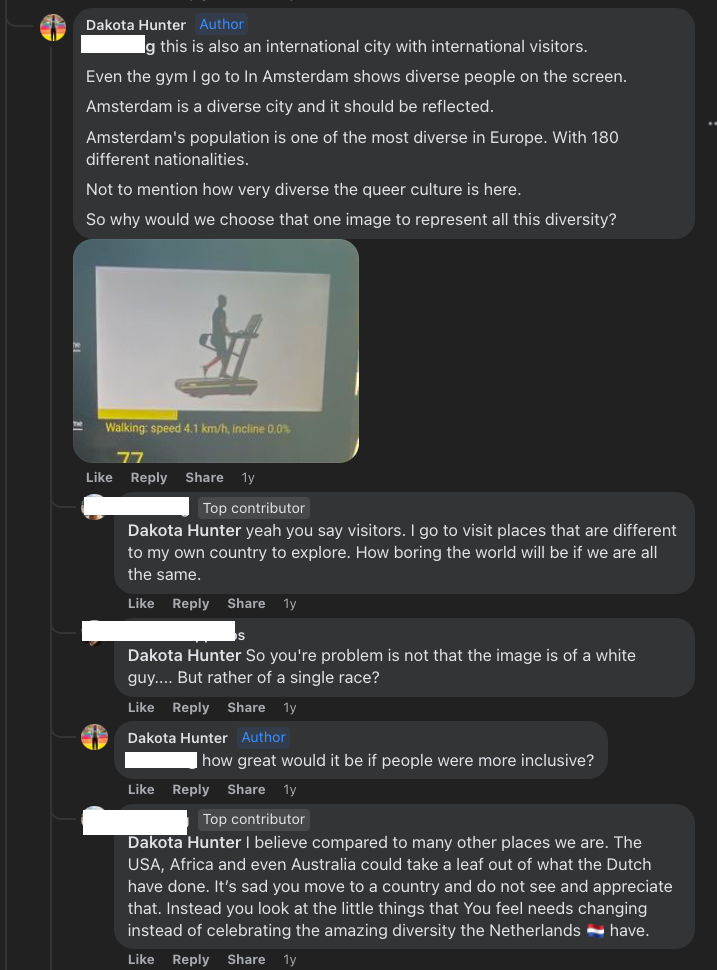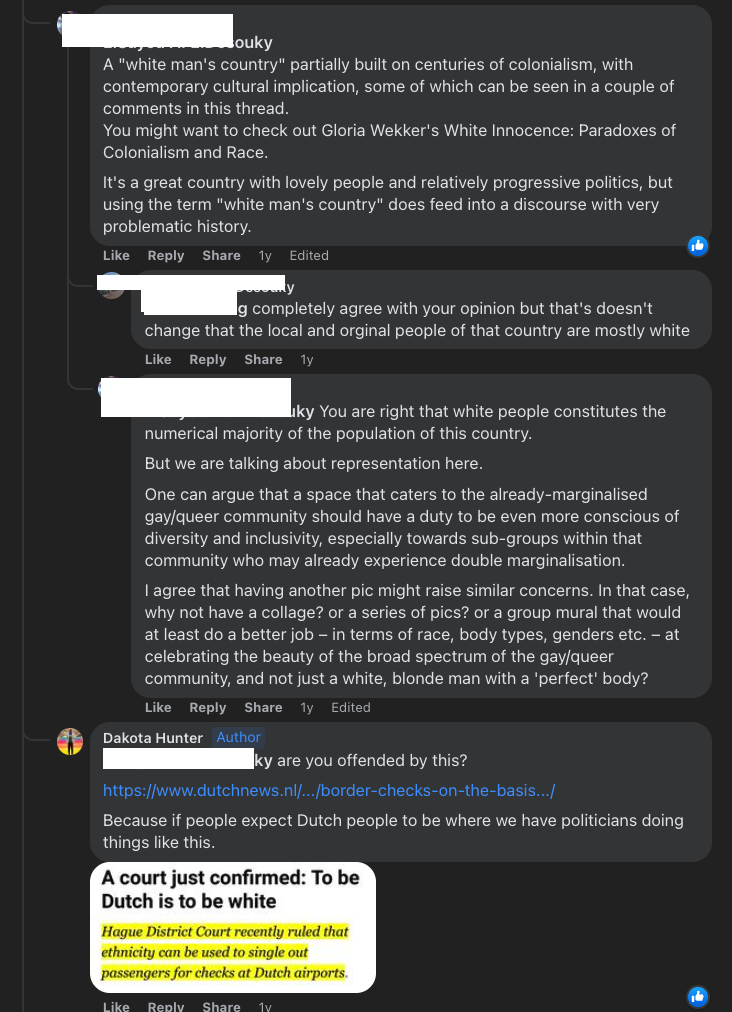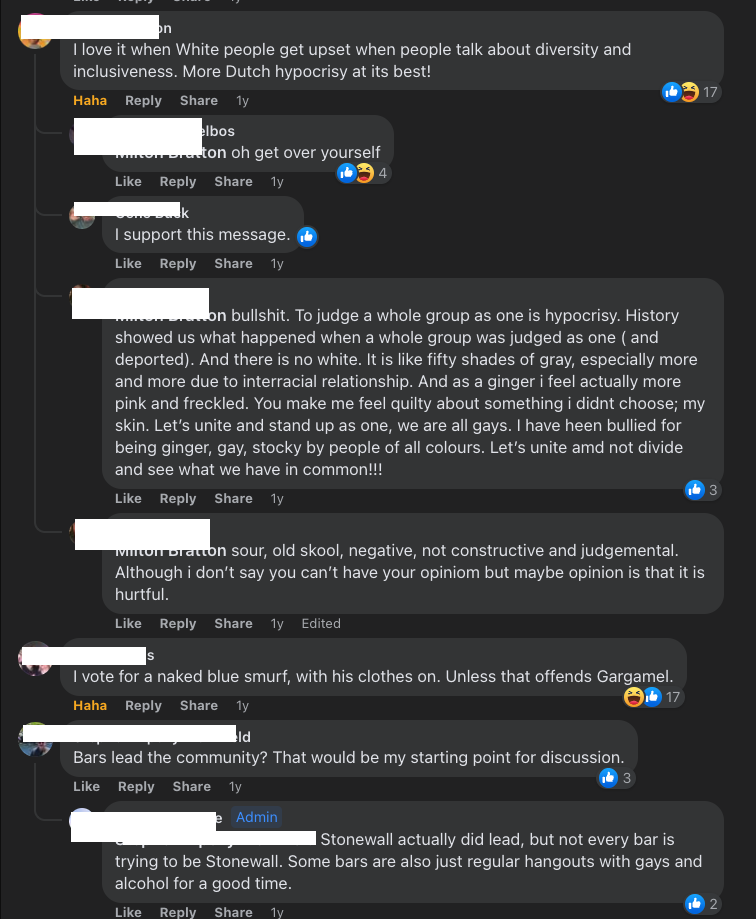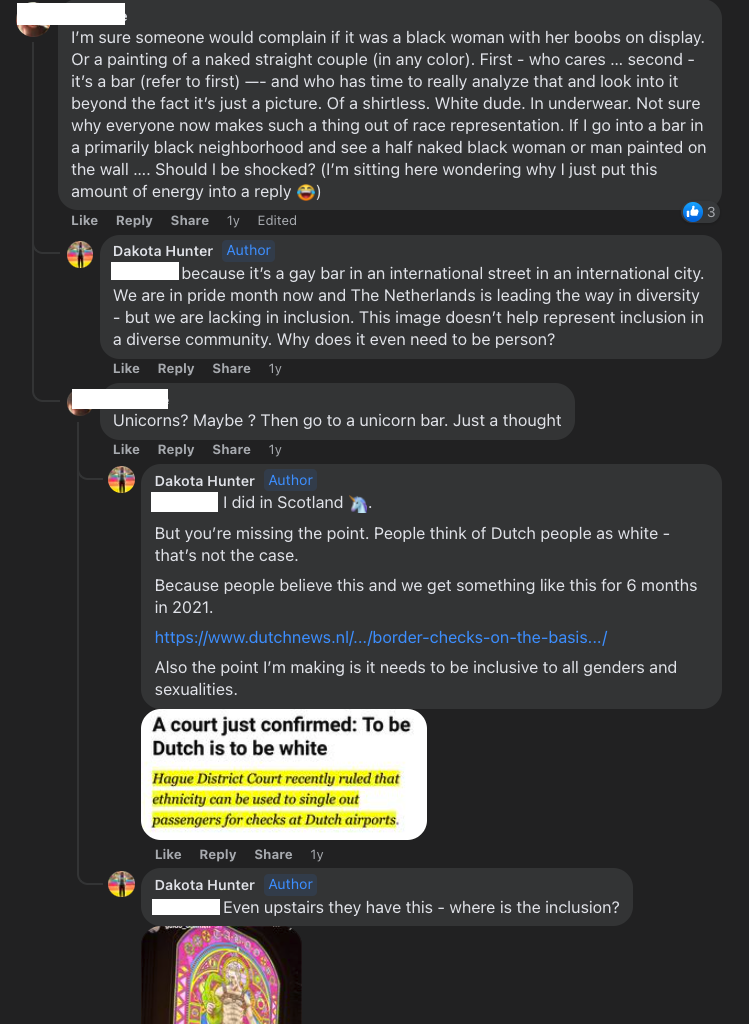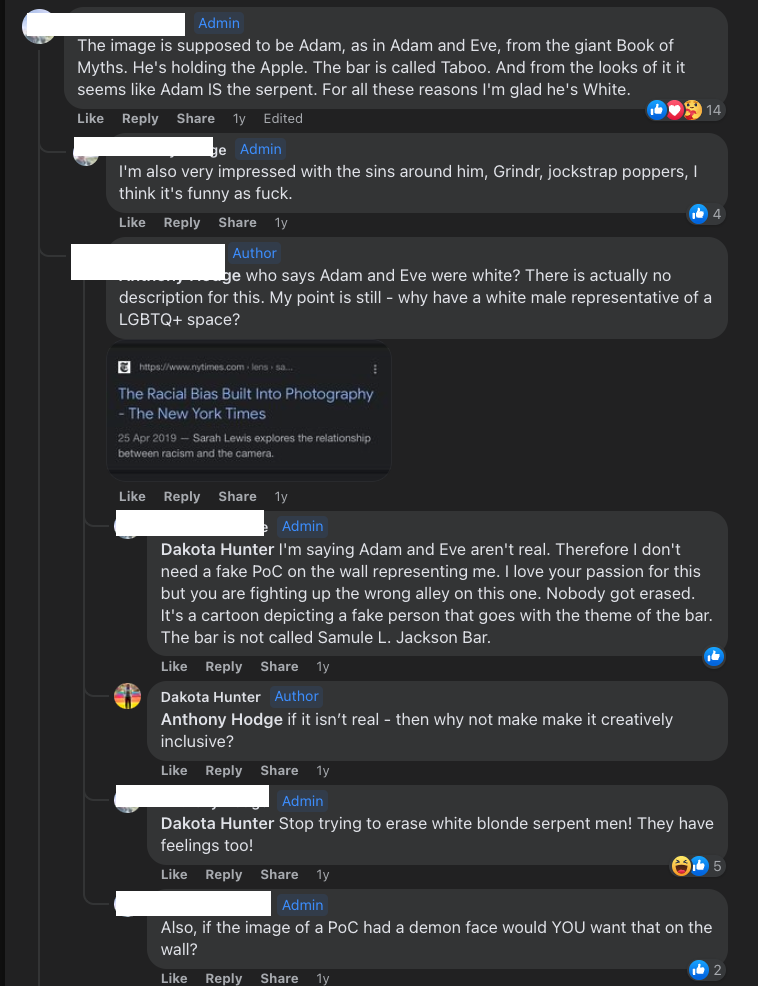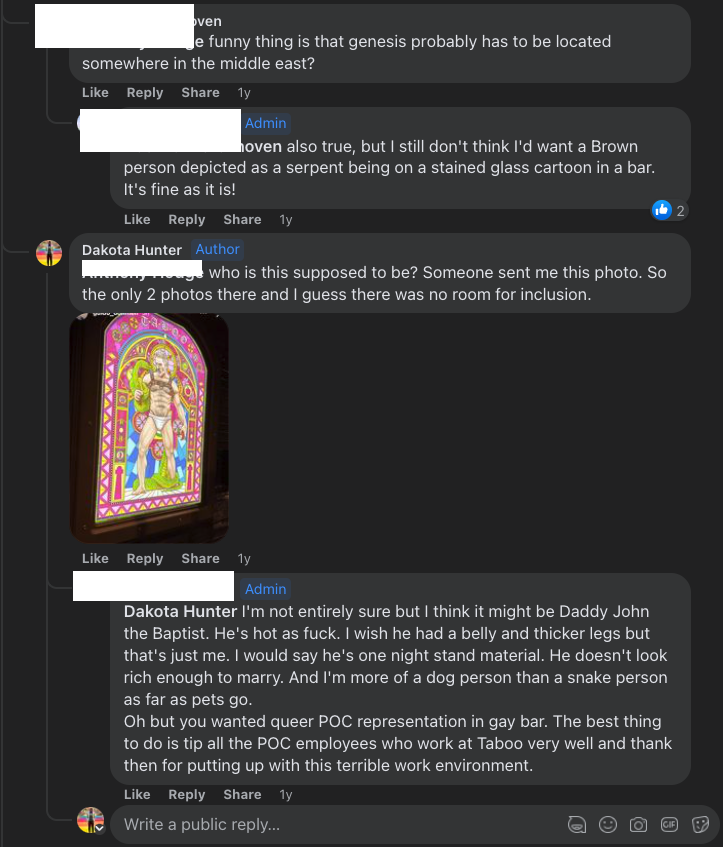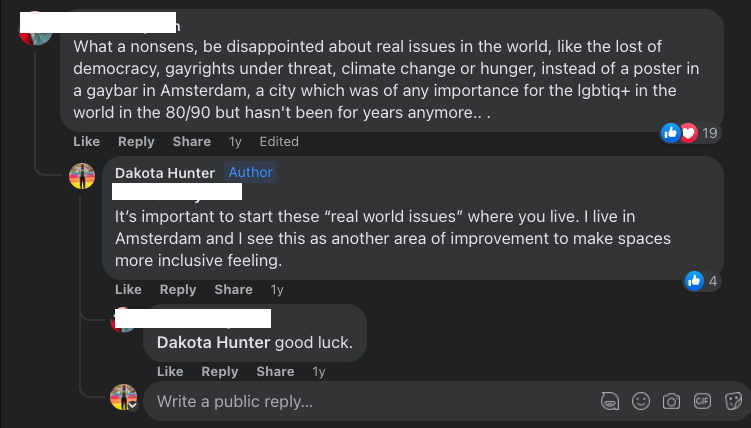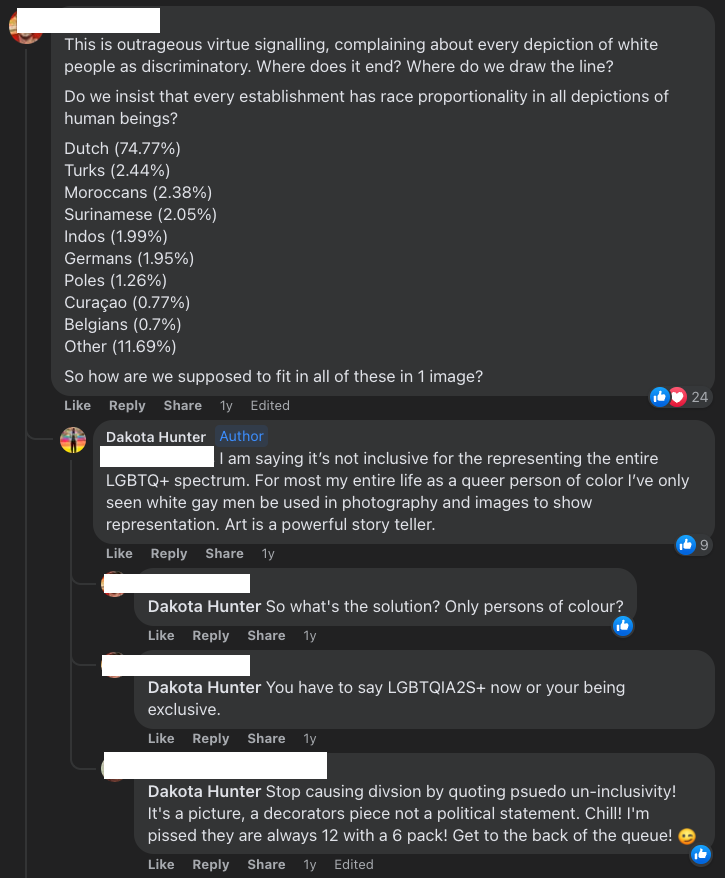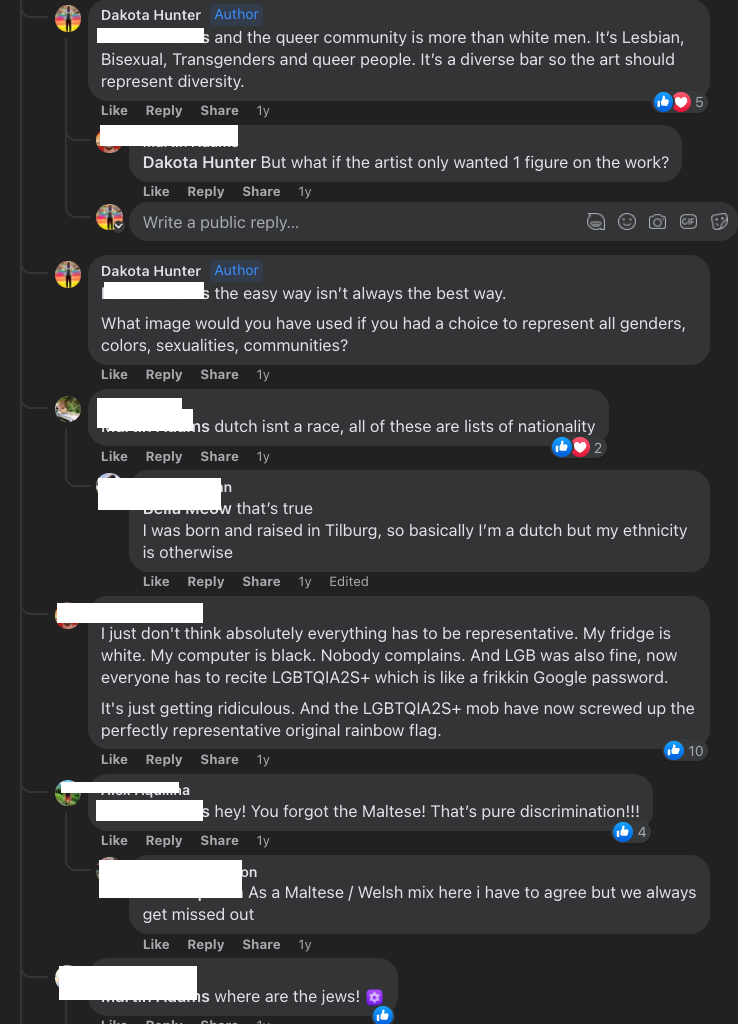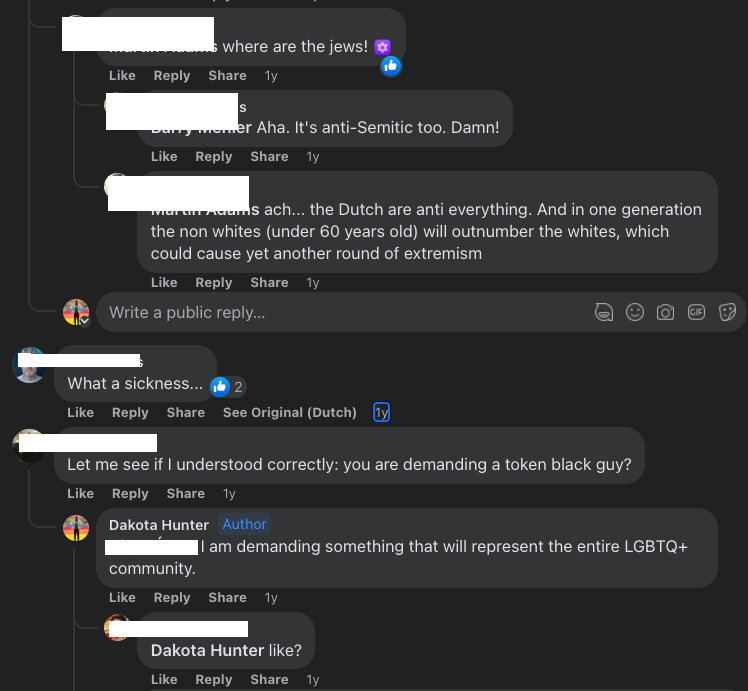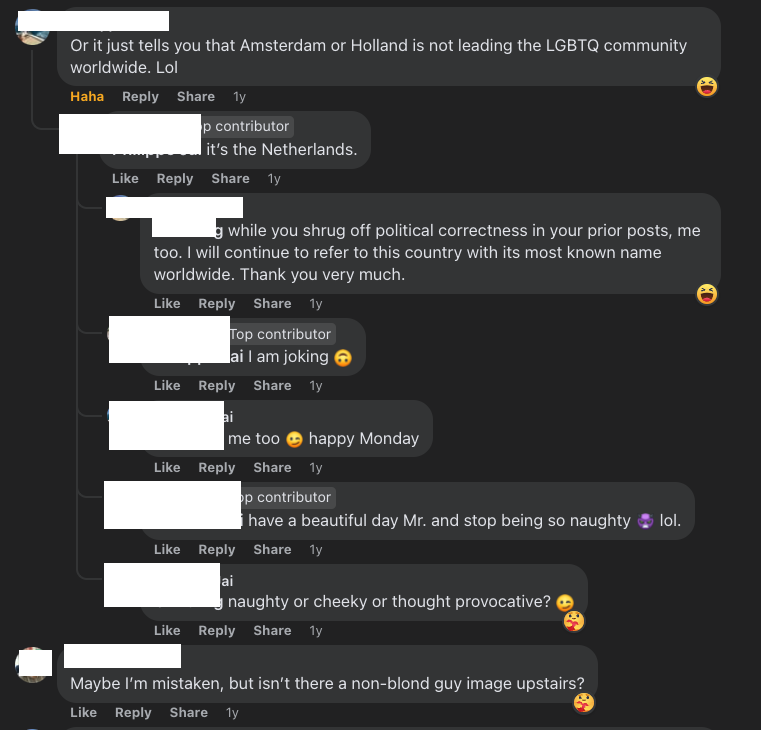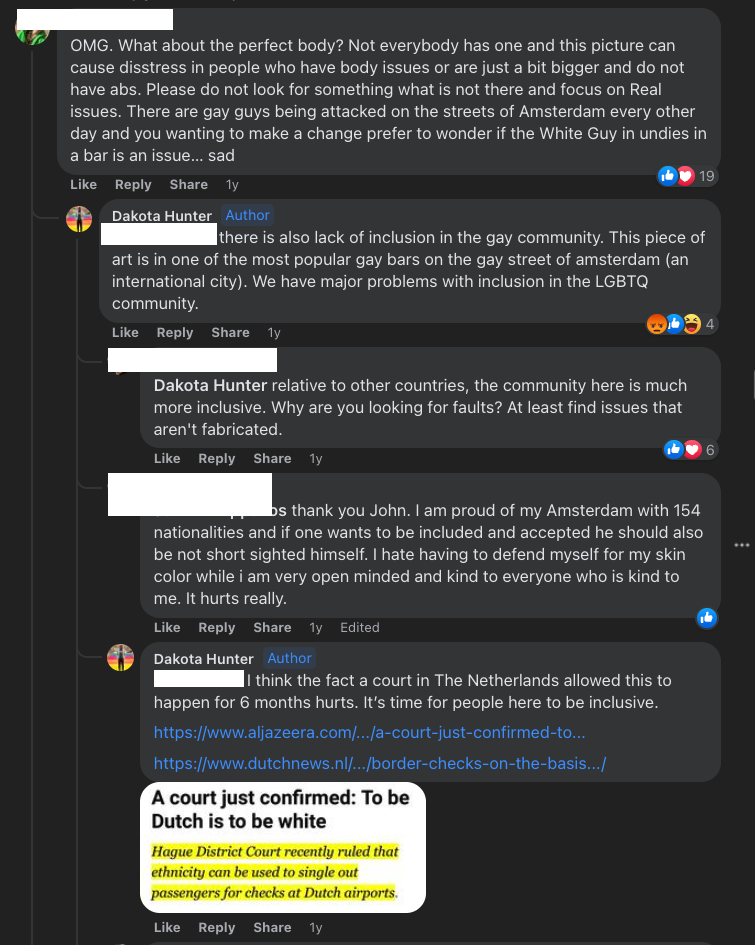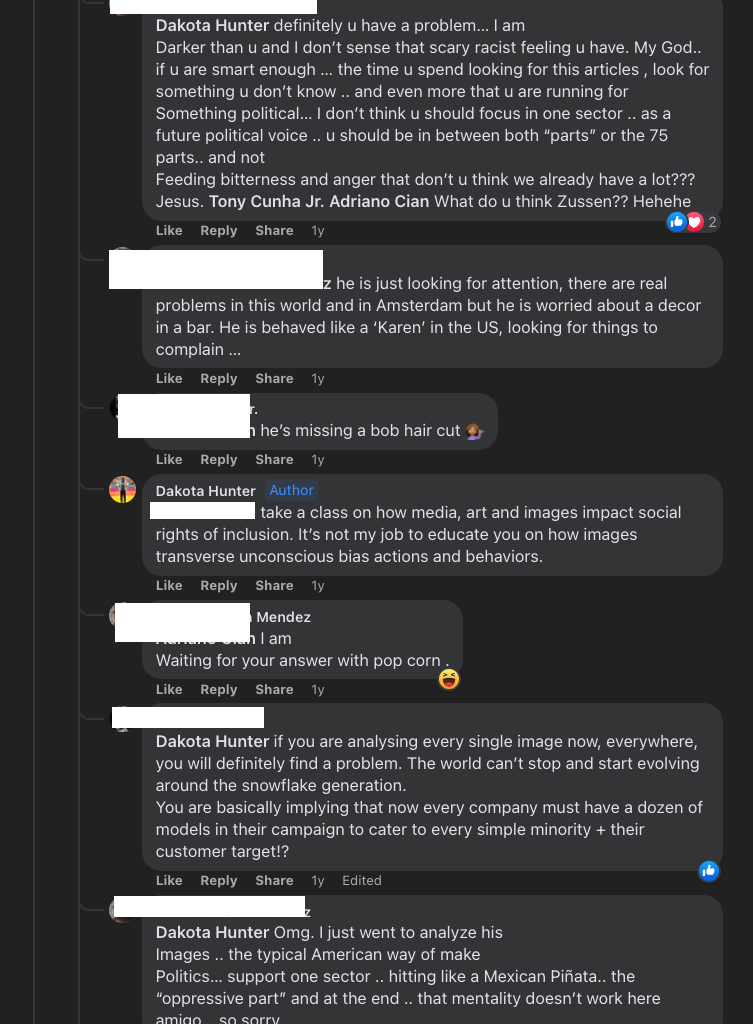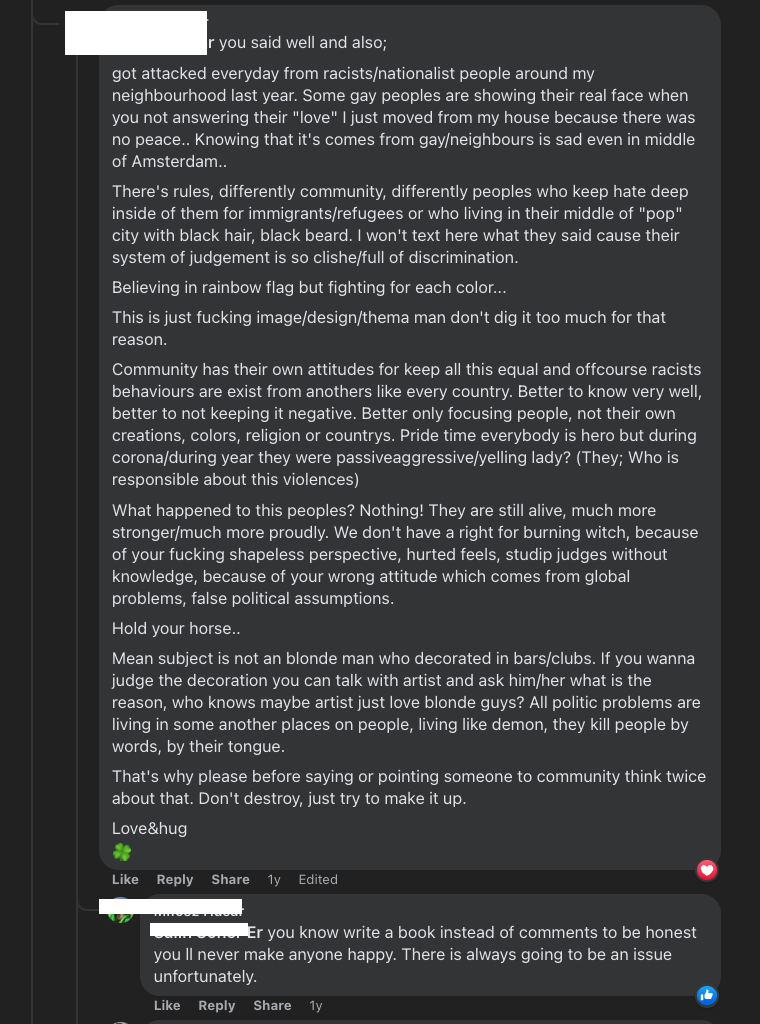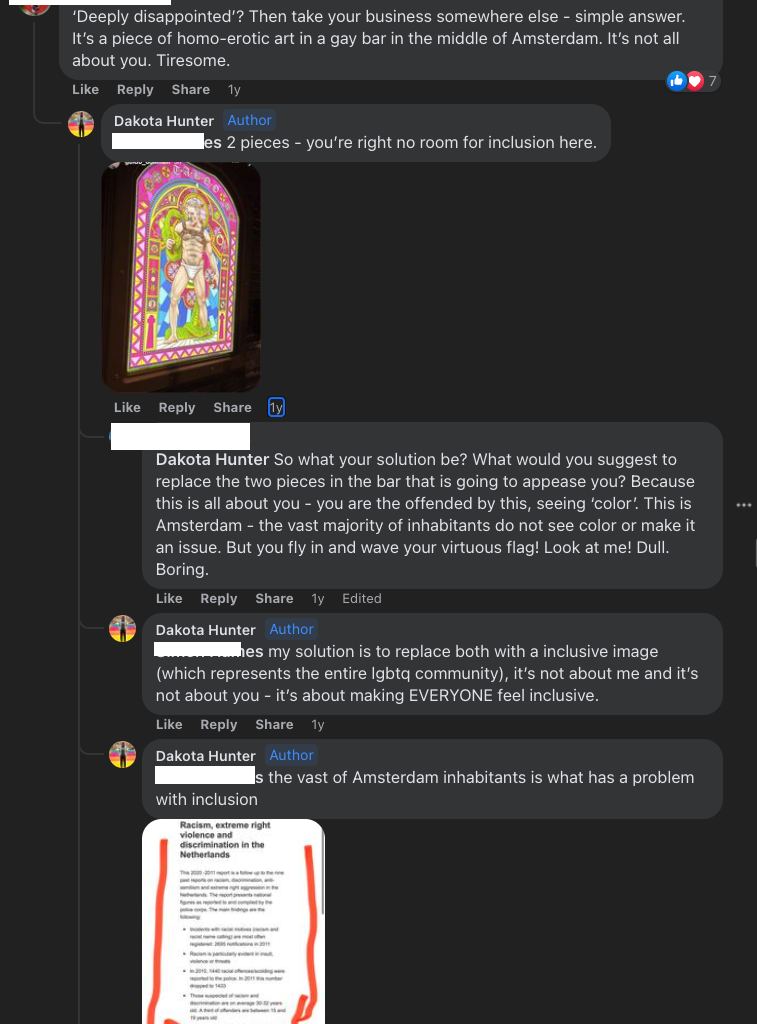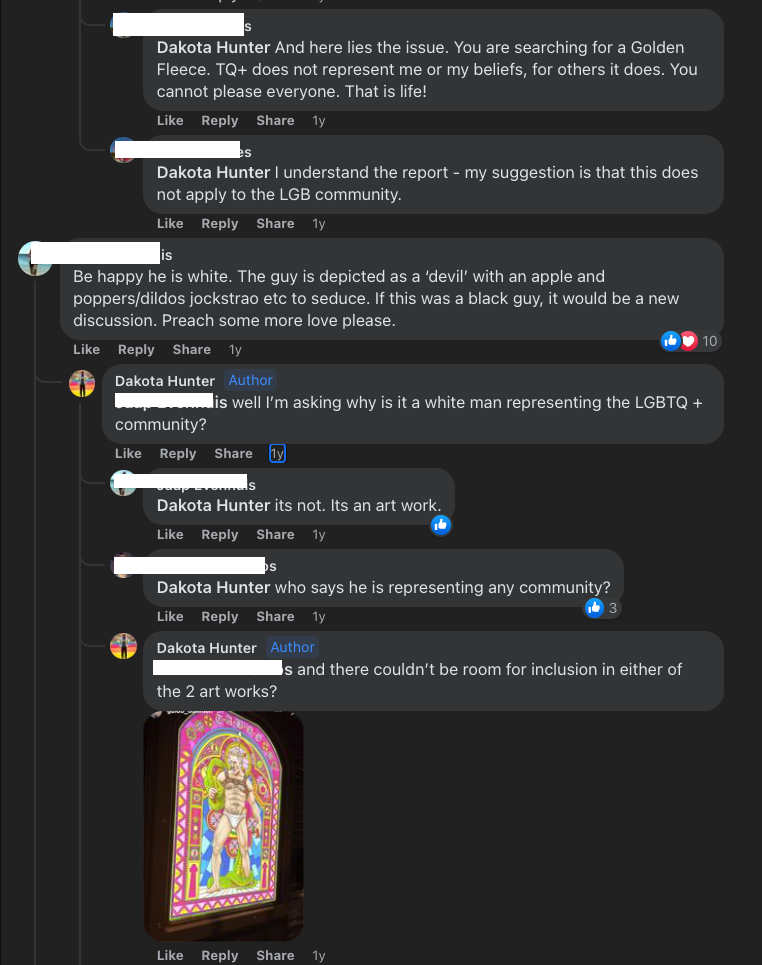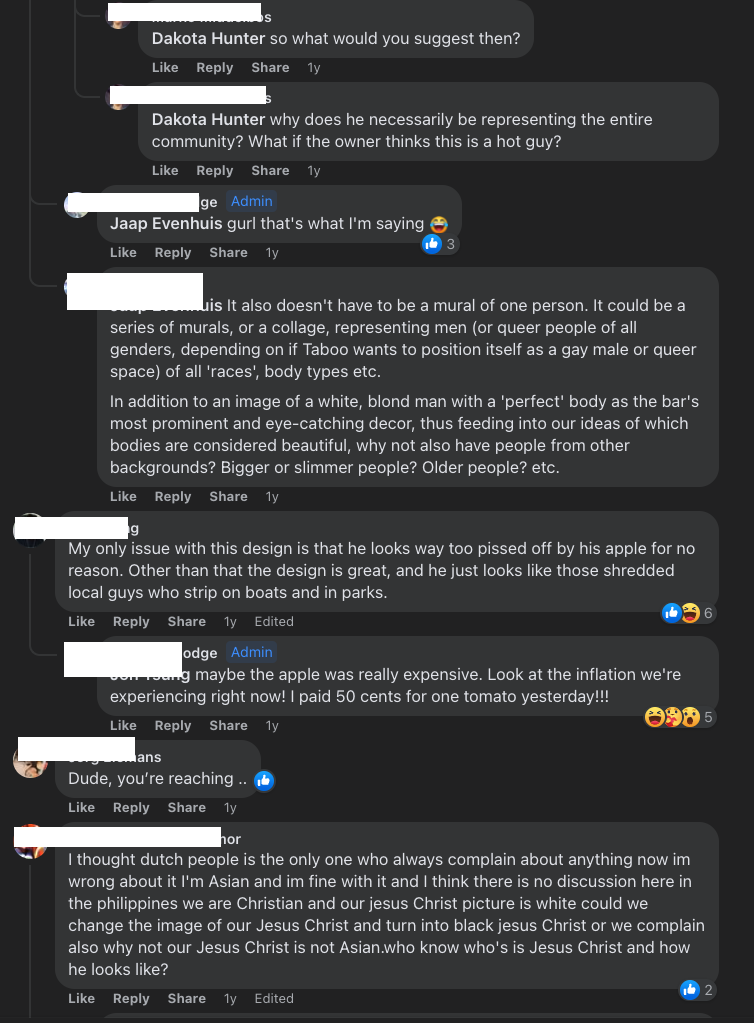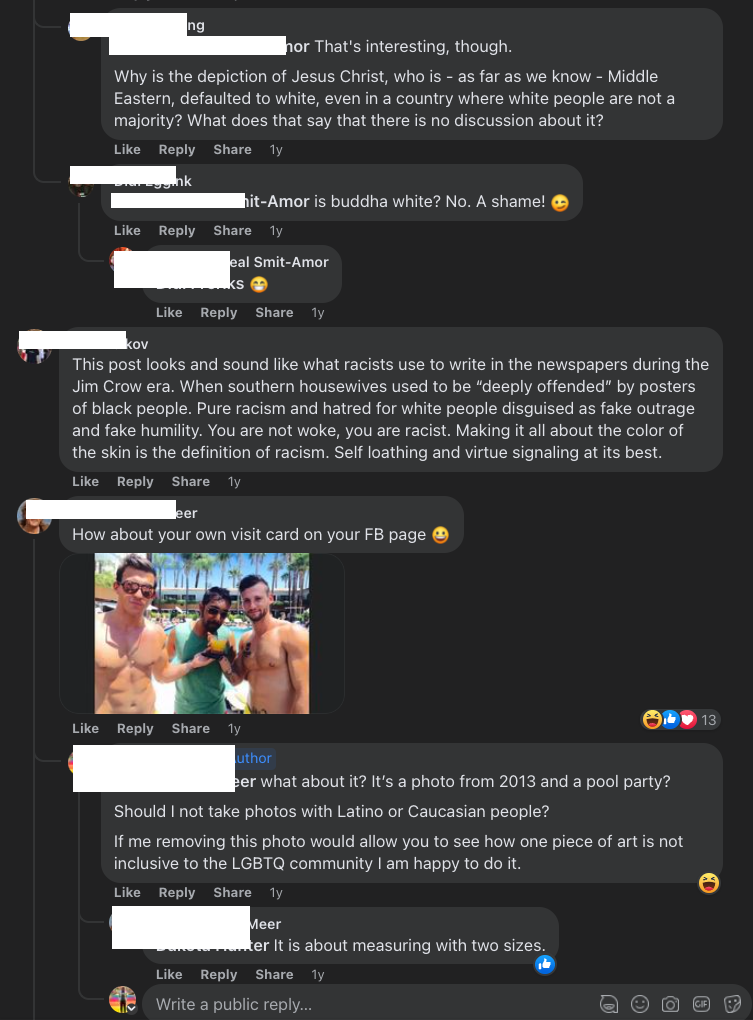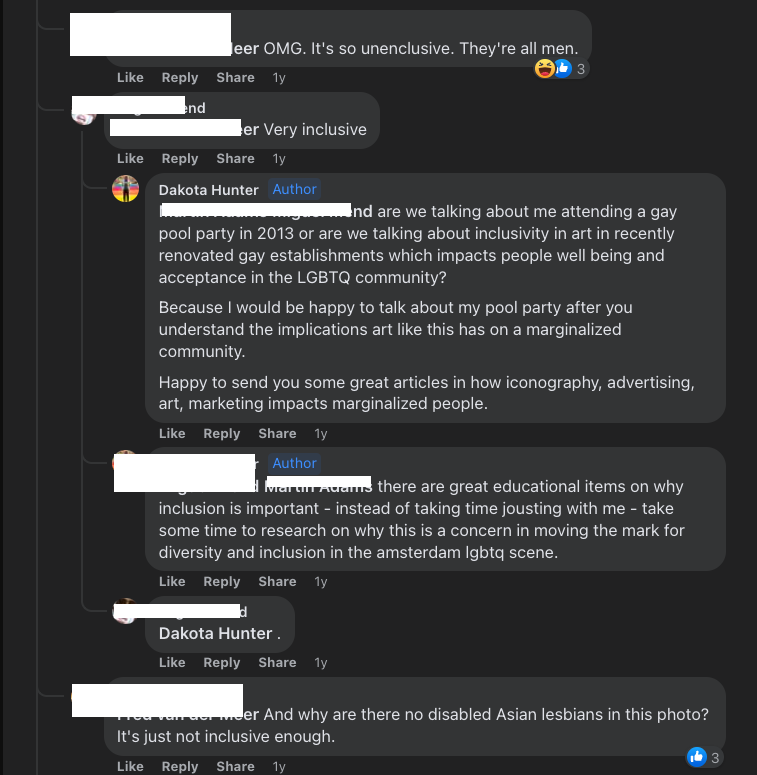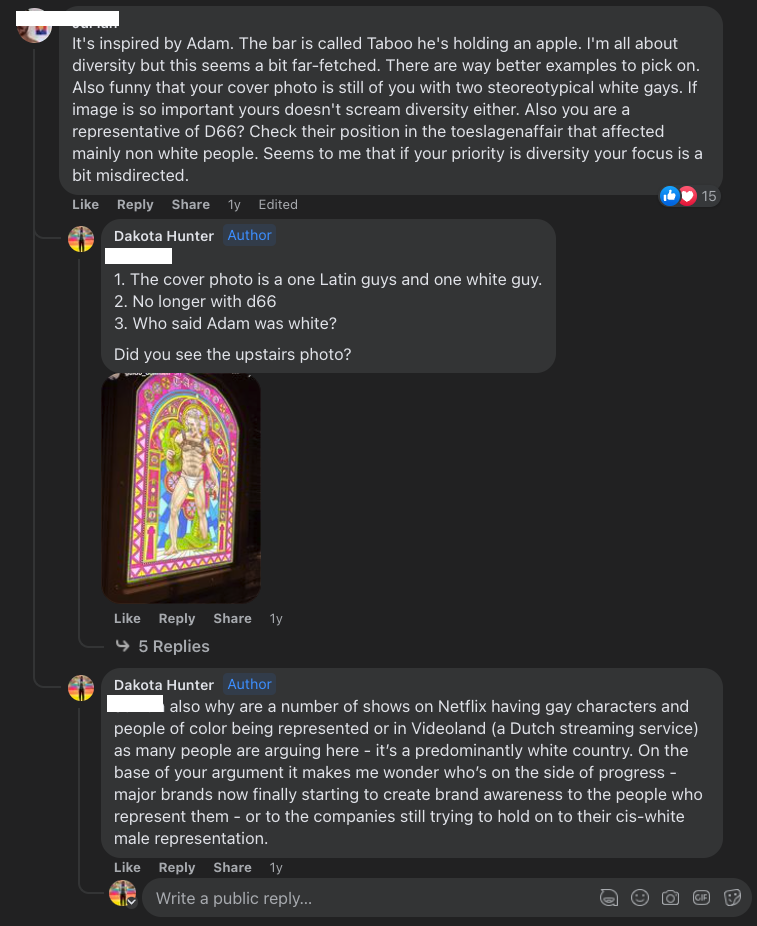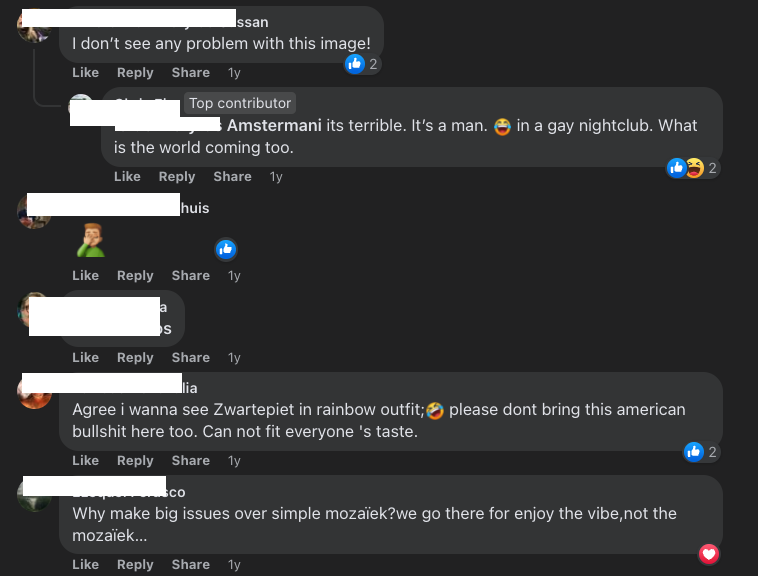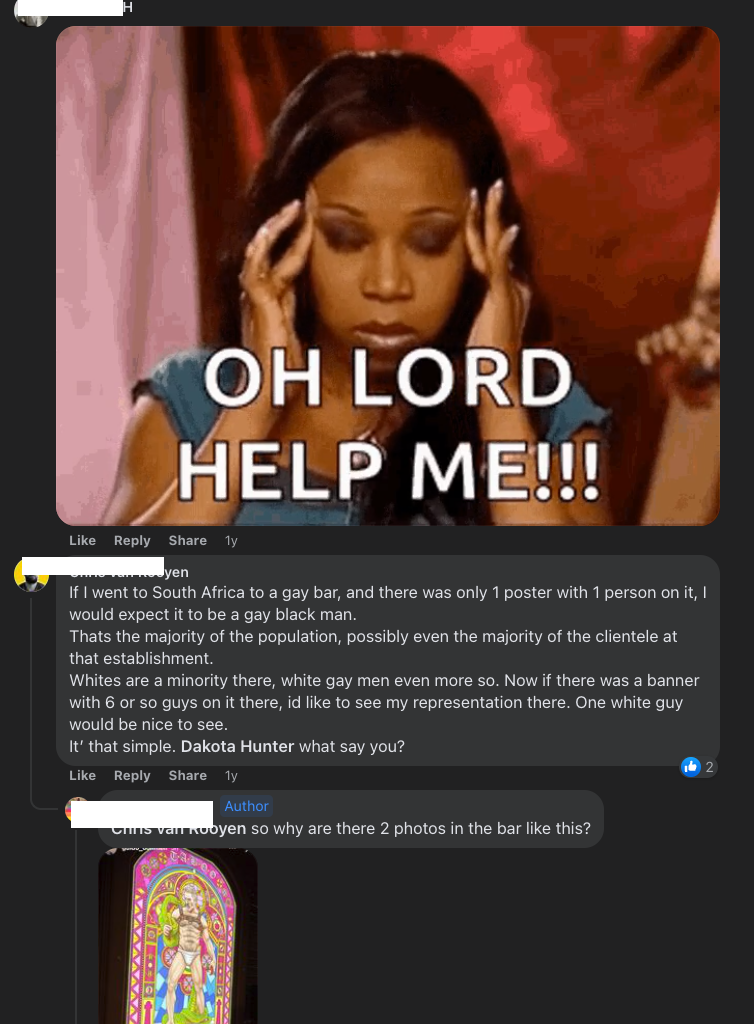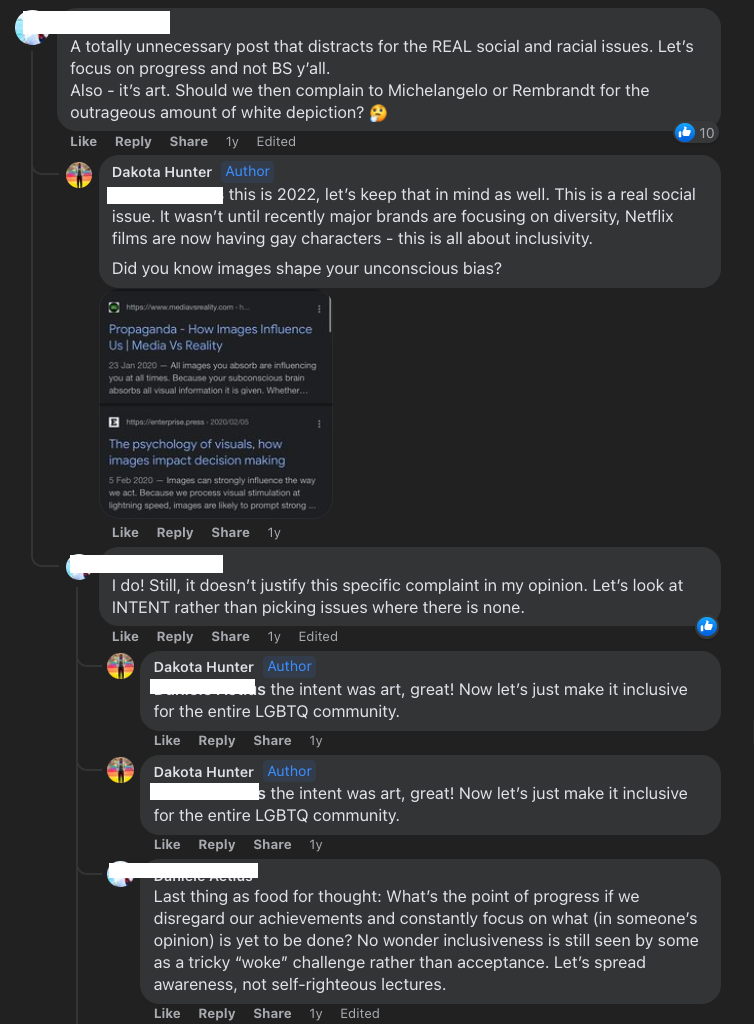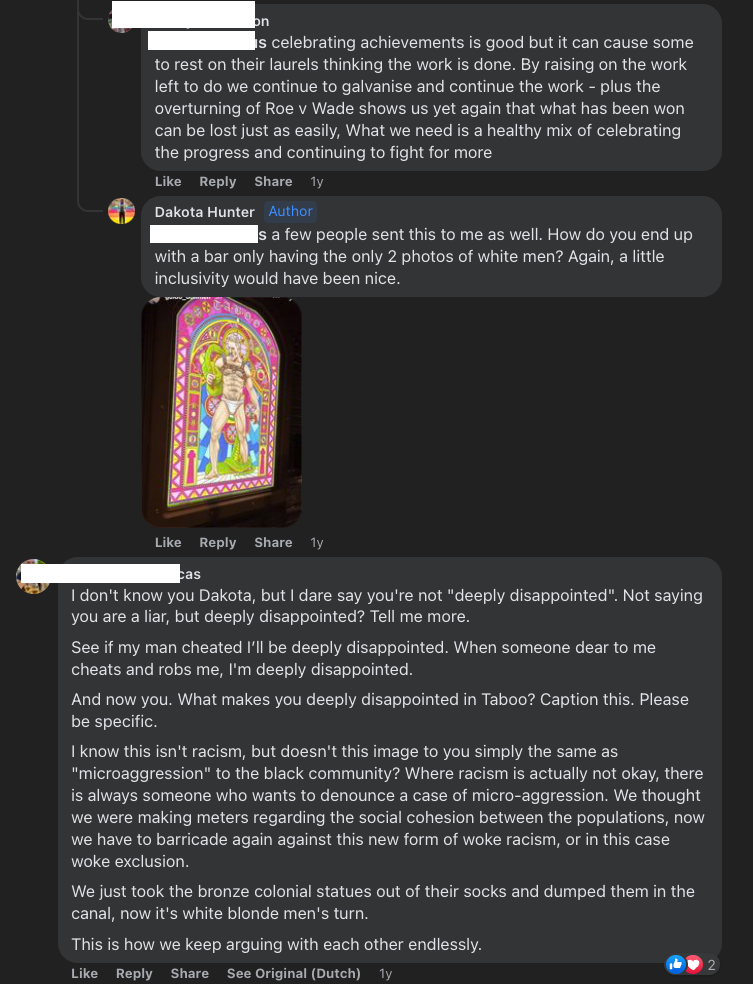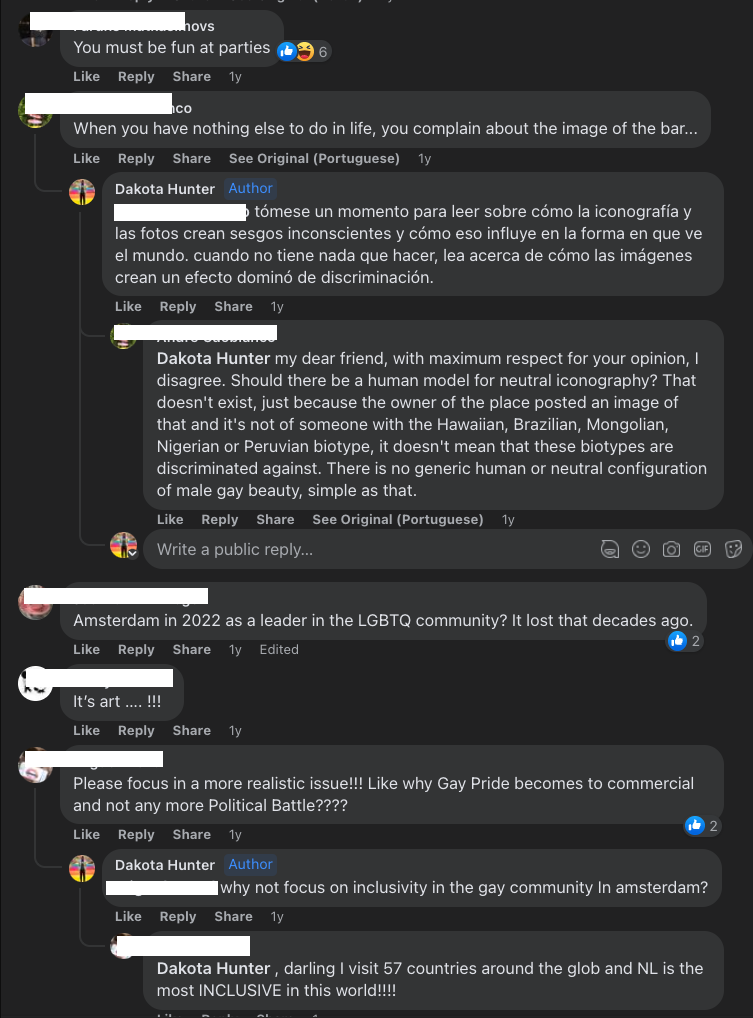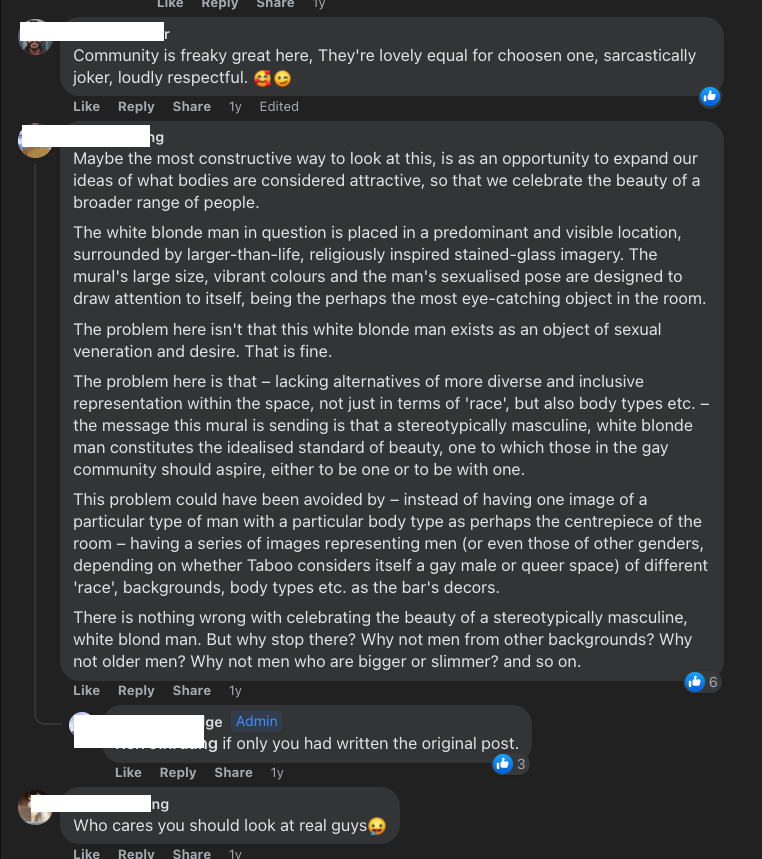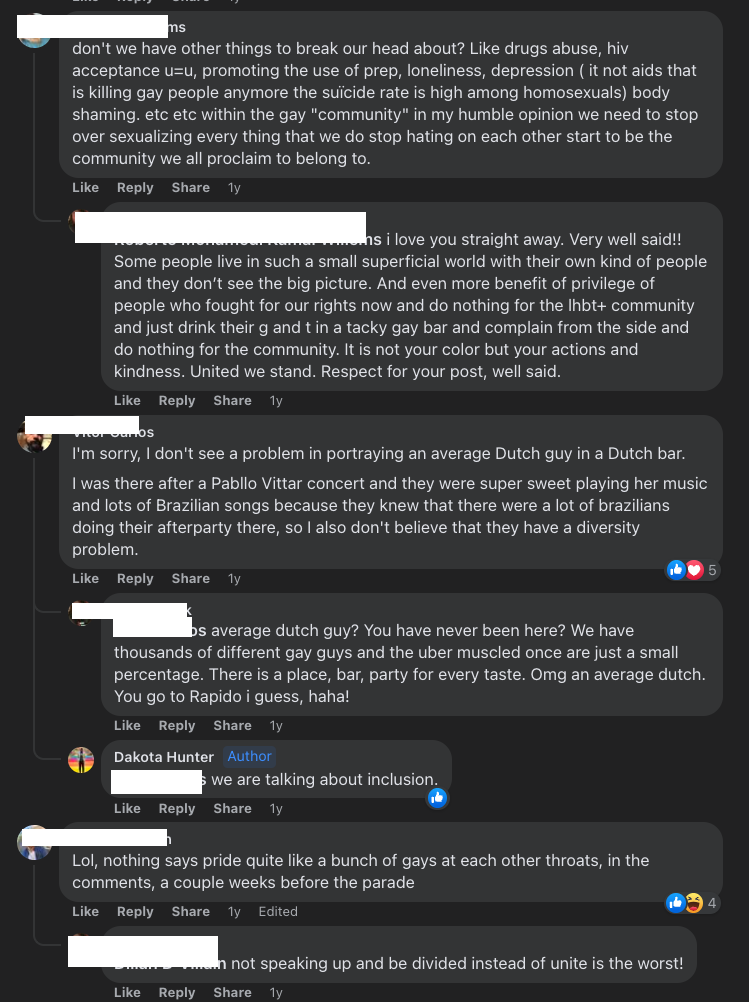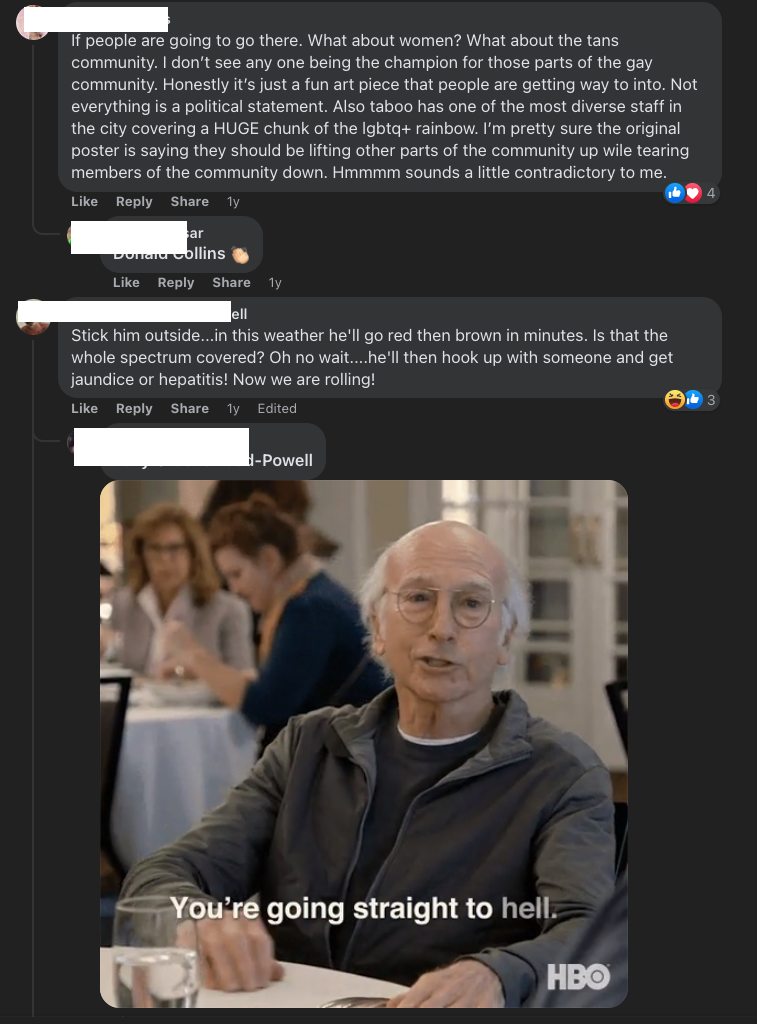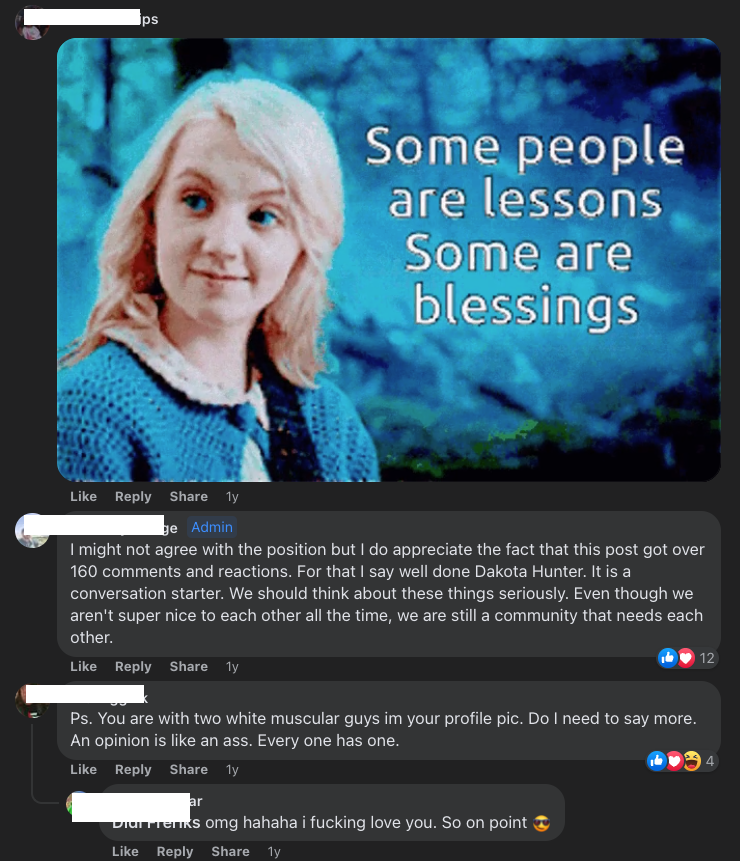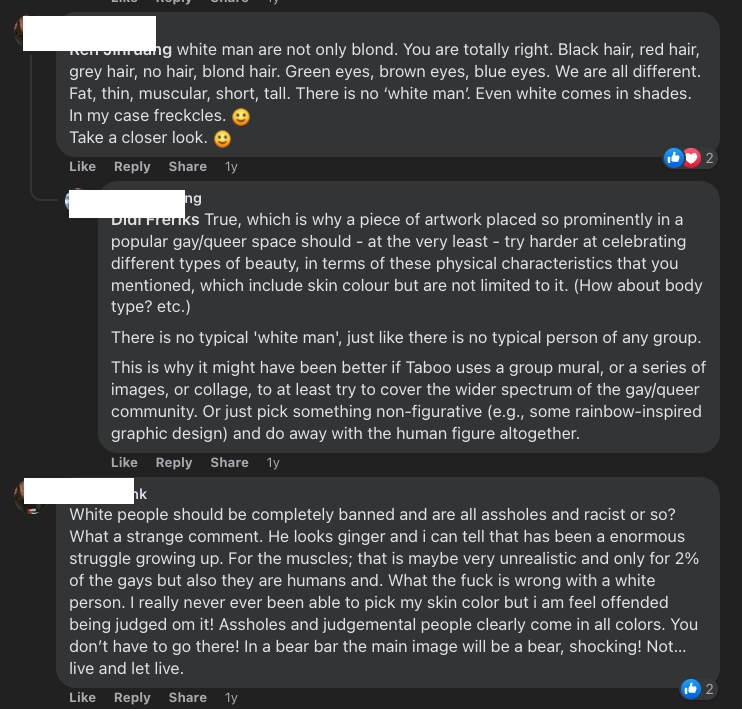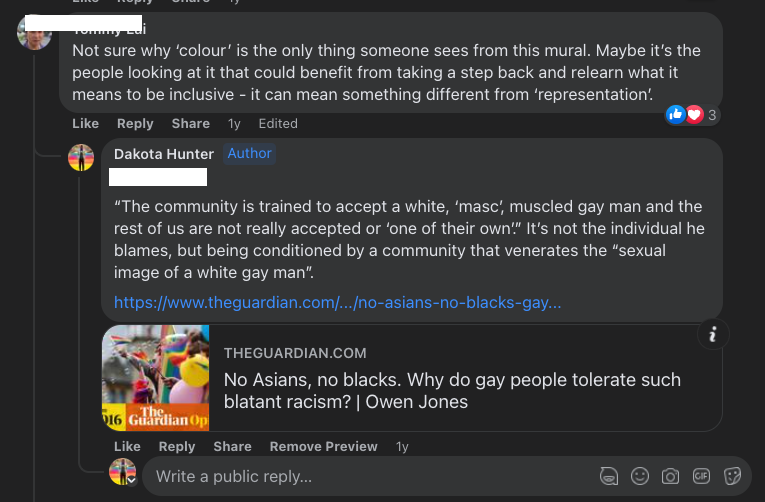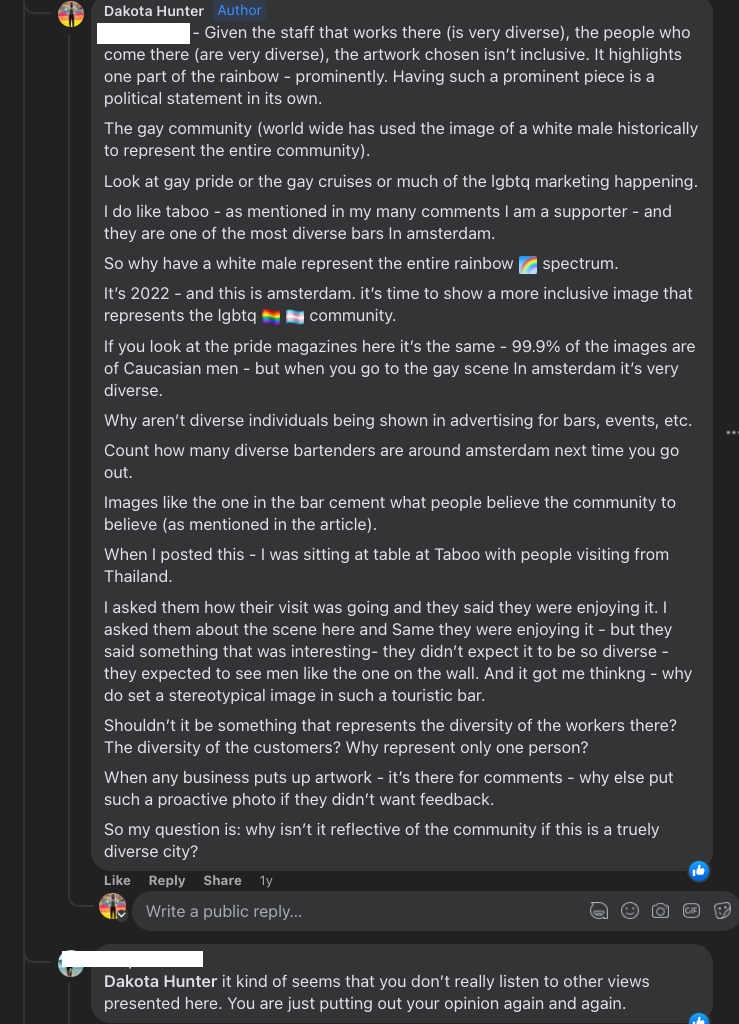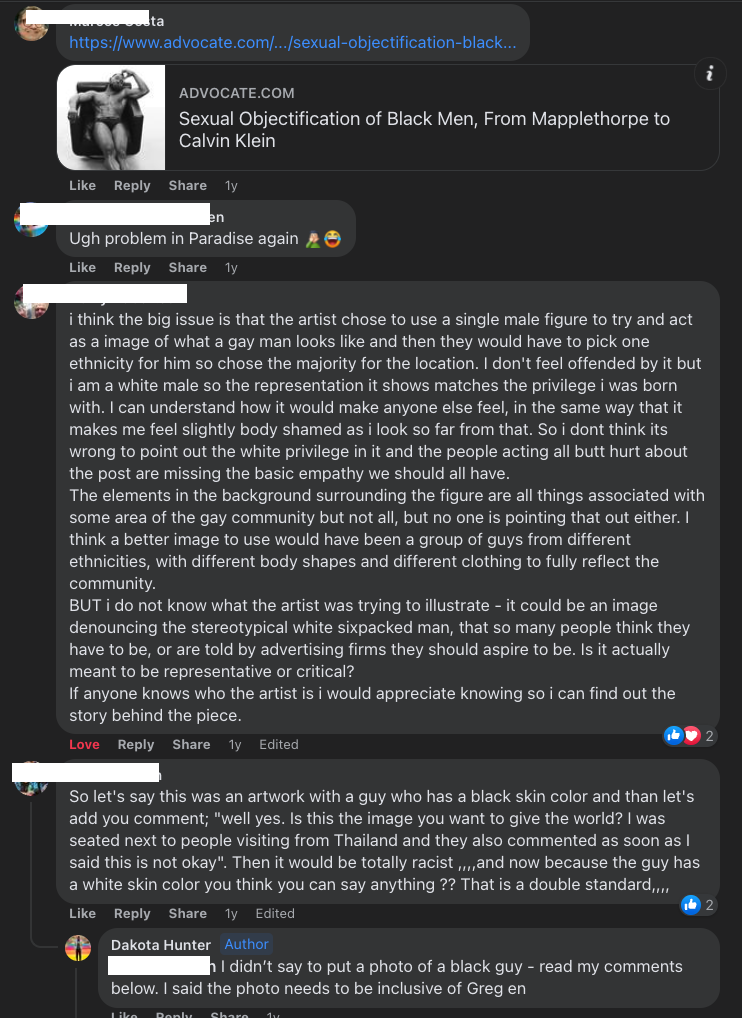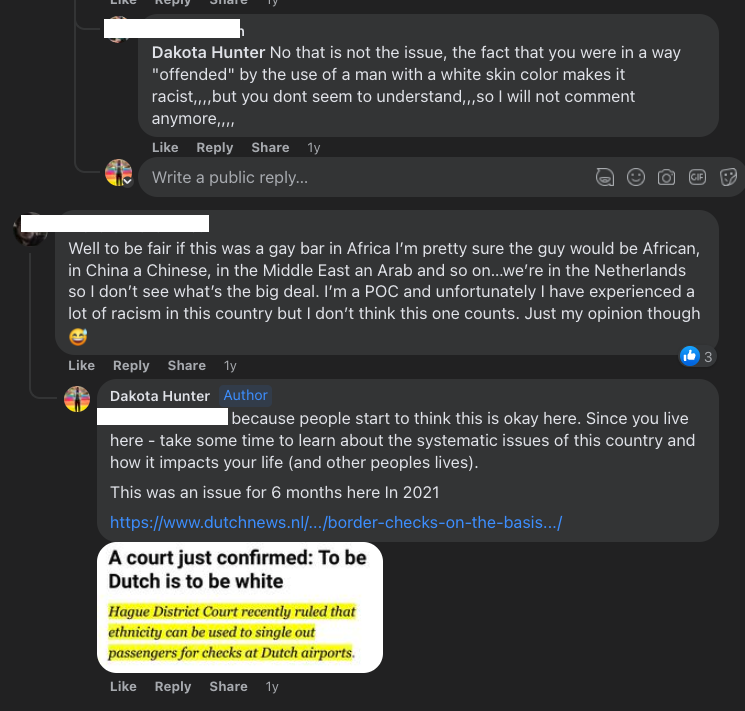View the Facebook post here.
Last year, I posted a comment about a mural in a popular Amsterdam gay bar, Taboo Gay Bar. The artwork featured a stereotypically masculine, white, blond man, and I questioned whether this image was inclusive and representative of the diverse LGBTQ+ community. The response was overwhelming, with over 200 comments and reactions, sparking a lively debate.
The Mural and Its Implications
The mural in question is placed in a prominent and visible location, surrounded by vibrant colors and a sexualized pose. While some see it as just an art piece, others, including myself, see it as a reflection of a broader issue within the LGBTQ+ community.
The problem isn’t that this white blonde man exists as an object of desire. The issue is that lacking alternatives of more diverse and inclusive representation within the space, sends a message that a stereotypically masculine, white blonde man constitutes the idealized standard of beauty.
The Responses
The comments ranged from support to criticism, with many diverse perspectives. Some agreed that the mural could be more inclusive, while others felt that it was just an art piece and not meant to be a political statement.
Some commenters pointed out that the bar has a diverse staff and clientele, and thus the mural shouldn’t be seen as a problem. Others argued that the image perpetuates a stereotype that doesn’t reflect the true diversity of the LGBTQ+ community.
The Bigger Picture
This conversation goes beyond a single mural in a bar. It’s about how we, as a community, represent ourselves and how we want to be seen by others. It’s about questioning the stereotypes and biases that persist within our community and working towards a more inclusive and accepting environment.
The debate also touched on other important issues, such as body shaming, racism, and the commercialization of Gay Pride. These are complex topics that deserve thoughtful discussion and action.
Moving Forward
The lively debate that this post sparked shows that we are a diverse group of individuals that views representation differently.
As we move forward, let’s continue to question, discuss, and strive for a more inclusive and representative LGBTQ+ community. Whether it’s through art, advertising, or our daily interactions, we have the power to shape a community that truly reflects all its beautiful diversity.






